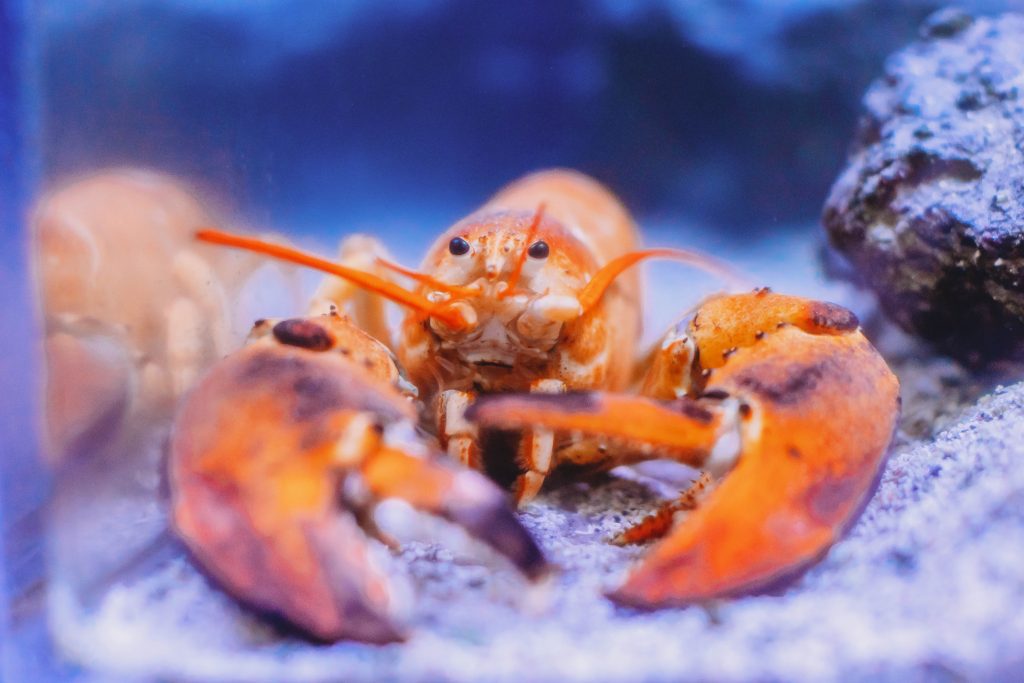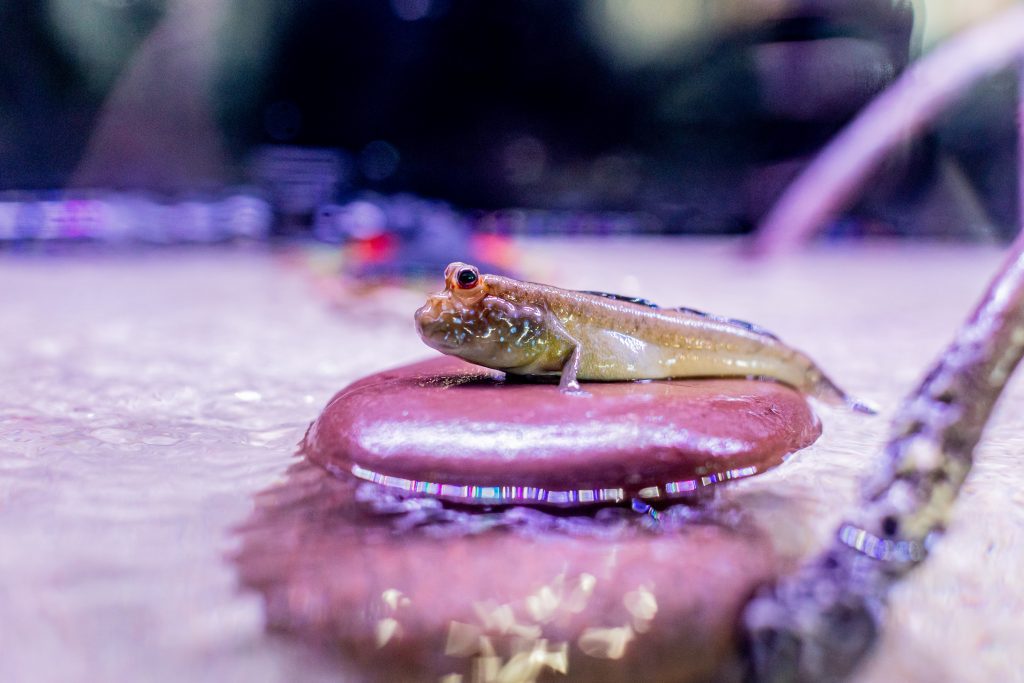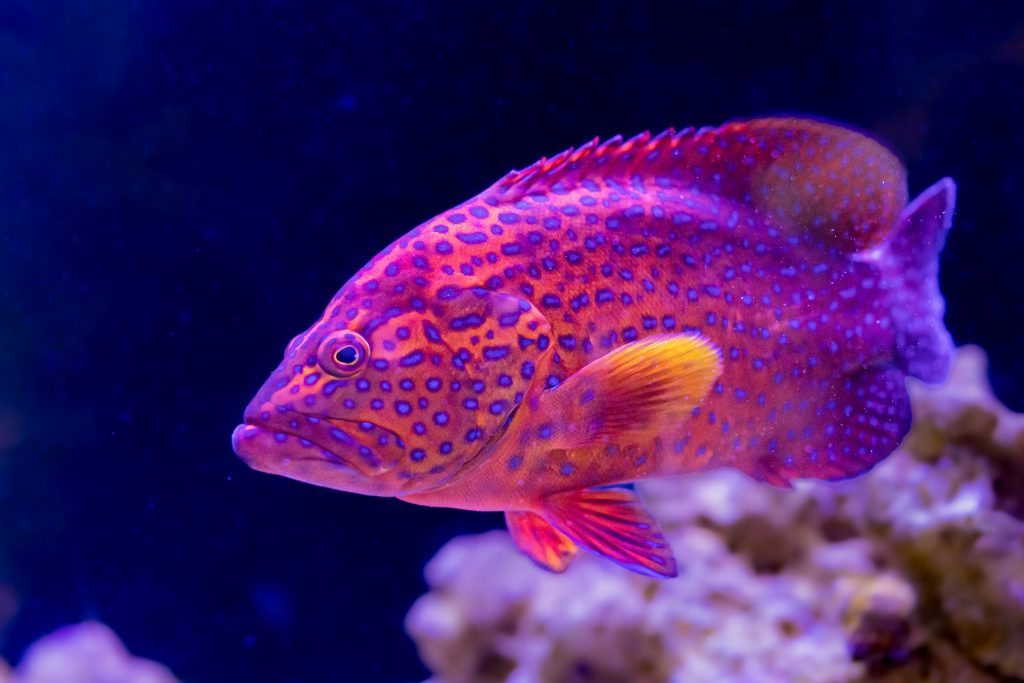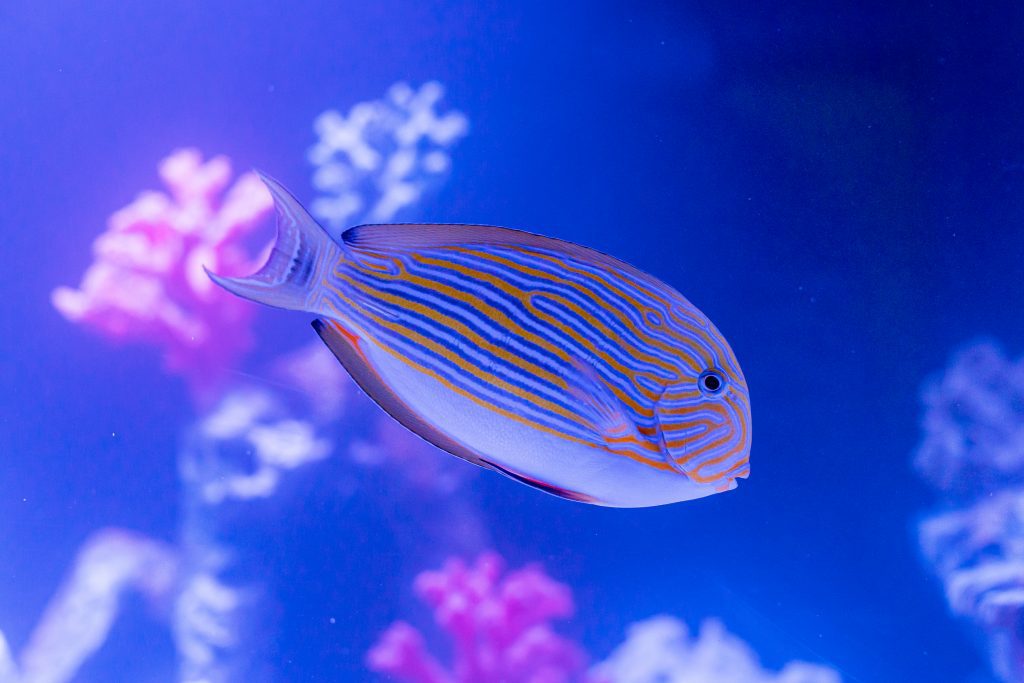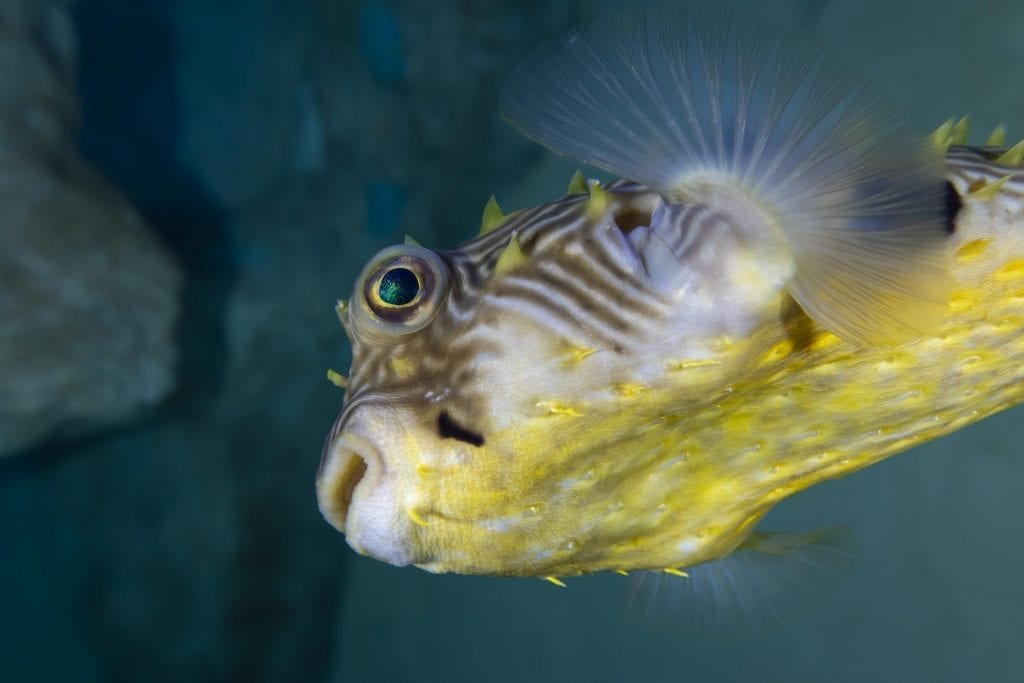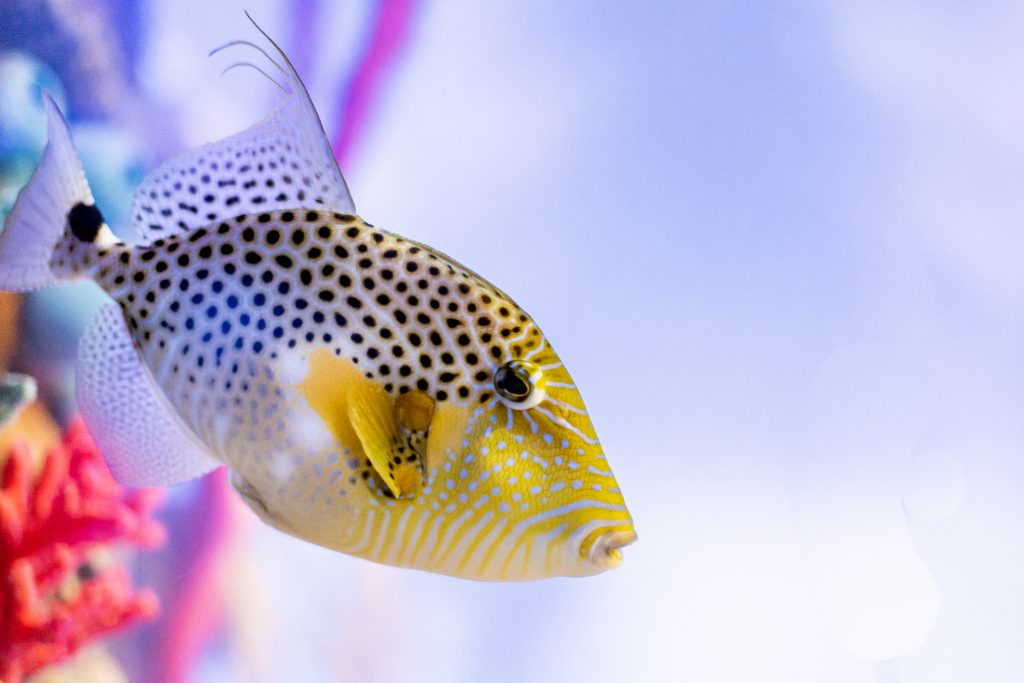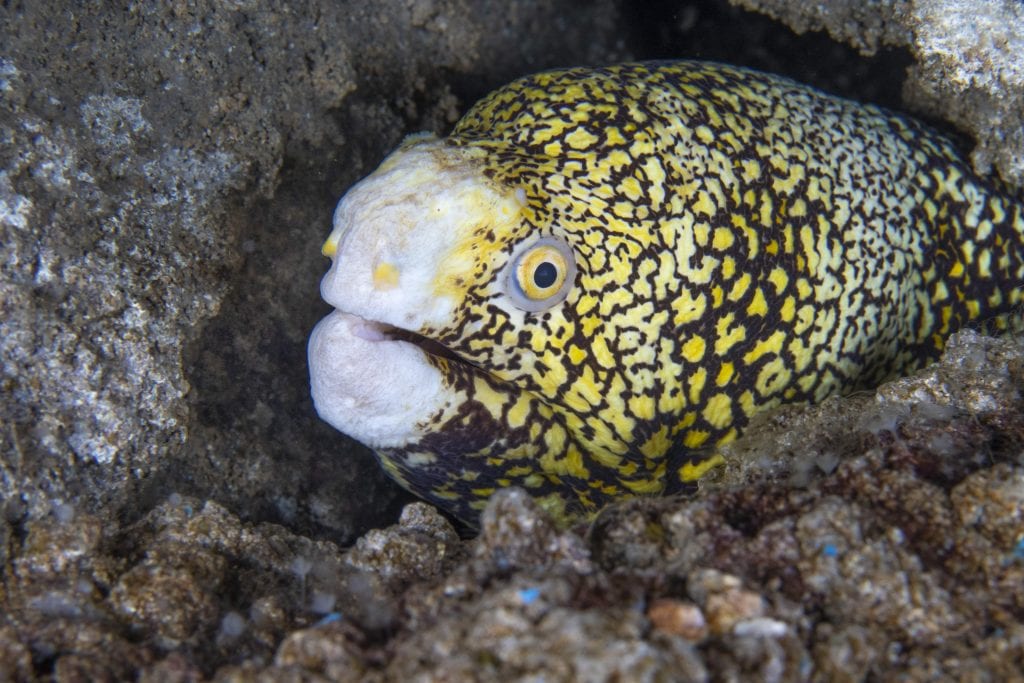Clearwater Marine Aquarium is full of all sorts of exciting ocean animals! From maine lobsters to triggerfish, there are a number of different sea creatures that are worth learning about.
Where to See
- Mavis’s Rescue Hideaway
- Mangrove Key Kids Zone
- Sea Cavern
- Shipwreck Alley
More Marine Animal Species
Fish
Clown Trigger
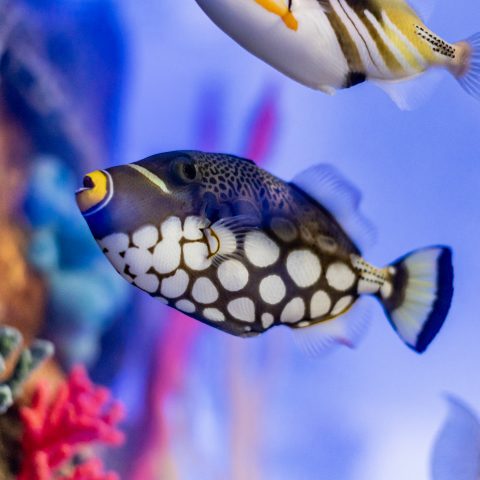
- HABITAT
- They prefer the clear tropical and sub-tropical waters of the coral reef.
- DIET
- These are carnivore fish that live upon a wide variety of species of fish, crustaceans, mollusks, echino- derms, including shrimps, shellfish, small squids, as well as, corals and marine algae.
- THREATS
- The list of enemies of the triggerfish is long. In fact, all carnivore species that share their habitat prey upon the fish, including the sharks of the coral reefs, large squids, and octopuses
- GEOGRAPHIC DISTRIBUTION
- They are widely spread throughout the Indo-Pacific belt, without any subspecies. Their range includes the coastline of East and South Africa, from Samoa to Indonesia, ex- tending to the southern parts of Japan, as well as the eastern coast of Australia.
Golden Heart Triggerfish
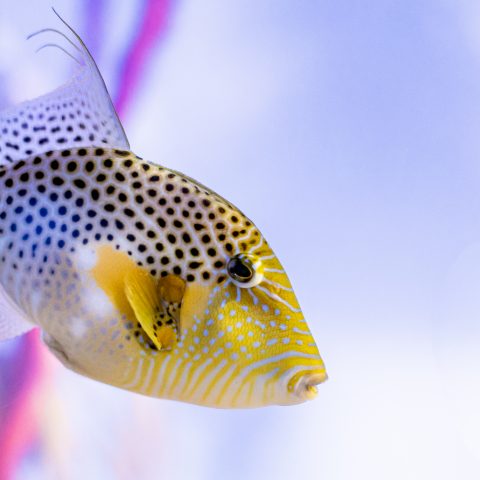
- STATUS
- Vulnerable
- THREATS
- The list of enemies of the triggerfish is long. In fact, all carnivore species that share their habitat prey upon the fish, including the sharks of the coral reefs, large squids, octopuses, and several other fish species.
- DIET
- In the wild, Balistes punctatus feeds primarily on crabs, bivalves and other similar crustaceans found in and amongst rocky coastal areas. However, Golden Heart Triggerfish are not picky eaters and will readily consume a wide variety of meaty marine foods including: shrimp, clams, scallops, fish flesh, squid, krill and other similar fair.
- GEOGRAPHIC DISTRIBUTION
- Eastern Atlantic from Madeira to Angola; including the Canary Islands, and Cape Verde.
Picasso Triggerfish
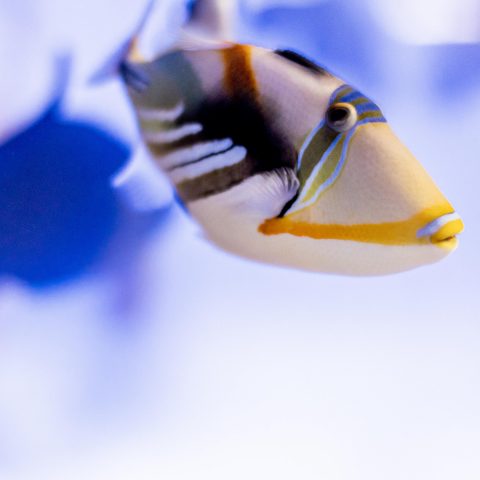
- SIZE
- Up to 12 In
- THREATS
- The list of enemies of the triggerfish is long. In fact, all carnivore species that share their habitat prey upon the fish, including the sharks of the coral reefs, large squids, octopuses, and several other fish species.
- DIET
- In the wild, they would prey on inverte- brates like clams, shrimps, and snails. Sometimes they’d manage to get larger foods like squid.
- GEOGRAPHIC DISTRIBUTION
- Picasso Triggerfish extend from the Hawai- ian islands southward to Polynesia and Australia, westward through Micronesia and Melanesia, through the East Indies includ- ing the Philippines, across the Indian Ocean, to the coast of Africa and the Red Sea.
Blue Tang
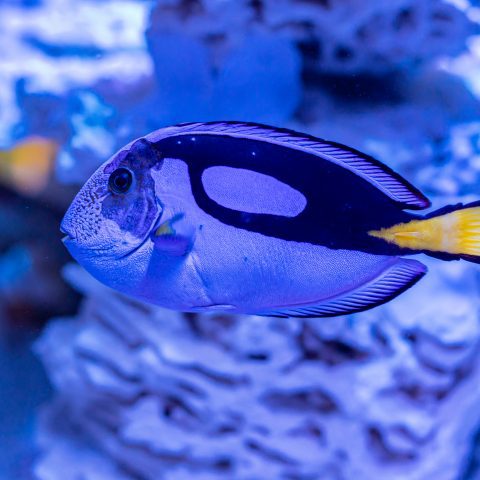
- STATUS
- Least Concern
- THREATS
- Large predatory fish such as sharks, groupers and jacks. Habitat destruction, exploitation for the aquarium trade and use for bait for fishing
- GEOGRAPHIC DISTRIBUTION
- Indo-Pacific: East Africa, including the Mascarene Islands to Kiribati, north to southern Japan, south to the southern Great Barrier Reef, New Caledonia, and Samoa.
- DIET
- Primarily an herbivore and feeds on zoo- plankton in the wild.
Snowflake Eel
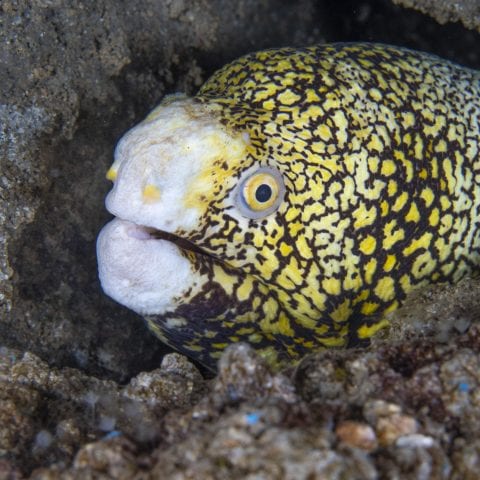
- Status
- Vulnerable
- Average Size
- 20 in
- Location
- Indo-Pacific & eastern Central Pacific
- Threats
- Fishing, harvesting, habitat lost
- Defining Characteristics
- Shiny, silvery scales
Also known as the clouded moray.
Clown Tang
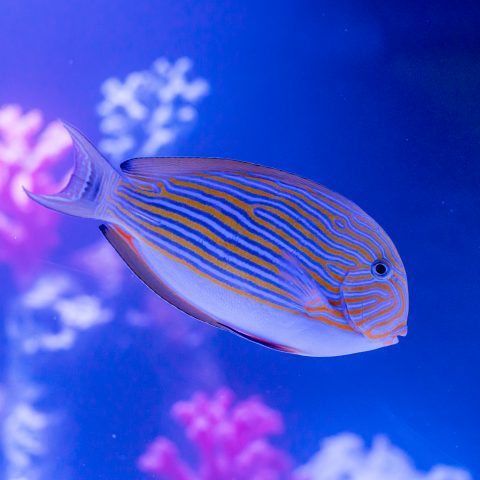
- STATUS
- Least Concern
- THREATS
- Large predatory fish, sharks and other marine predators. Overfishing, habitat destruction and coastal pollution.
- DIET
- Clowns are herbivores who occasionally consume invertebrate crustaceans in the wild.
- GEOGRAPHIC DISTRIBUTION
- Indo-Pacific: East Africa, including the Mascarene Islands to the Hawaiian, Marquesas and Tuamoto islands, north to southern Japan, south to the Great Barrier Reef and New Caledonia.
- SIZE
- Up to 12 Inches
Red Lionish
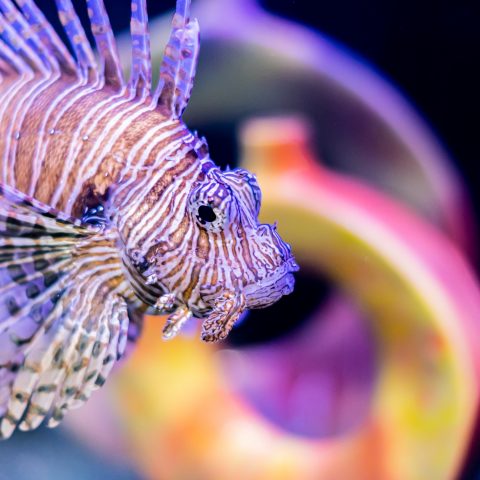
- Lifespan
- Up to 15 years
- Size
- 12 to 15 inches in length
- Weight
- Up to 2.5 pounds
- Habitat
- Warm marine waters around coral reefs, caves, or rocky areas
- Geographical Distribution:
- Native to the Red Sea across the Indian Ocean to Australia and the Pacific Ocean. Invasive to the Atlantic Ocean, Gulf of Mexico, and Caribbean Sea.
- Diet:
- Smaller fish, crab, shrimp, and plankton
Firefish
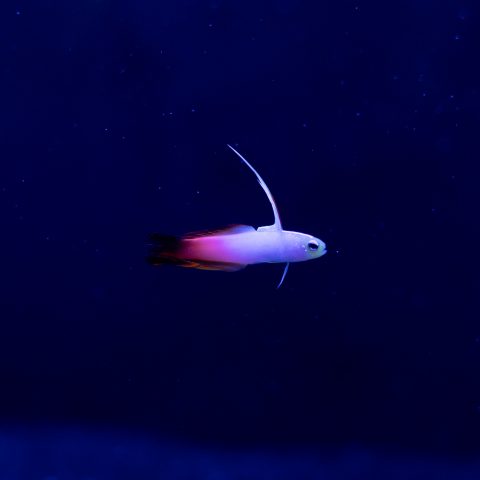
- STATUS
- Least concern
- SIZE
- Up to 3 inches long
- Habitat:
- Coral reefs of the Indian and Pacific Oceans
- Geographical Distribution:
- West of the East African coast, in the Indian ocean, to East of the Hawaiian Islands of the Pacific Ocean.
- DIET
- Small-shelled crustaceans, zooplankton, and algae
- THREATS
- Triggerfish, lionfish and large angelfish
Tessalata Eel
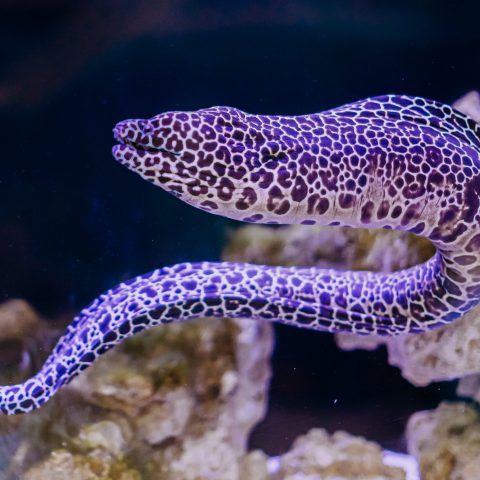
- Average Size
- 118 In
- Location
- Indo-West Pacific Ocean: Red Sea, East Africa, Papua New Guinea, southern Japan, and Australia
- Habitat
- Coral reefs
- Diet
- Cephalopods and small fishes
Squareback Anthias
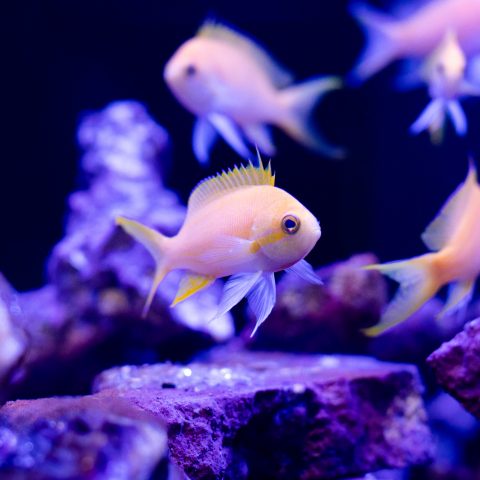
- SIZE
- 7.9 In
- HABITAT
- Coral reefs from 10 to 180 meters (33 to 591 feet).
- GEOGRAPHICAL DISTRIBUTION
- Found in the Pacific Ocean from Indonesia to Samoa, the Ryukyu Islands, Rowley Shoals, New Caledonia, and throughout Micronesia.
- DIET
- Zooplankton
- THREATS
- Coral reef loss and degradation, pollution
Striped Burrfish
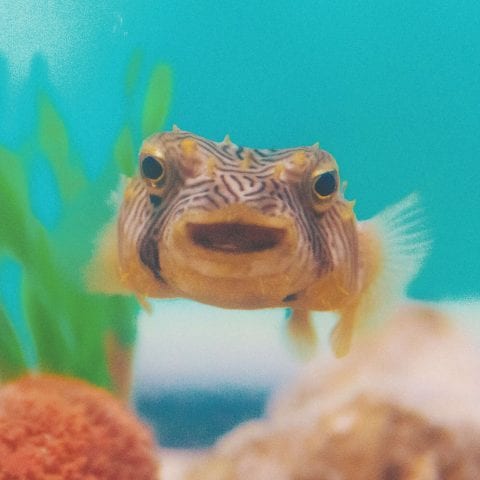
- STATUS
- Least Concern
- AVERAGE SIZE
- 4-10 in
- LOCATION
- Western Atlantic from Massachusetts to Brazil and parts of the Gulf of Mexico
- THREATS
- Increasing sea temperatures, Coastal development and pollution
- DIET
- Small fish, barnacles, crabs and clams
- HABITAT
- Seagrass beds in coastal lagoons, bays and coastal reefs
They are known for their “puffing”; when threatened they will ingest water, or air, to inflate their body. When they do this their spines become more prominent and this combined with the increase in size act as a deterrent for predators.
Lookdown
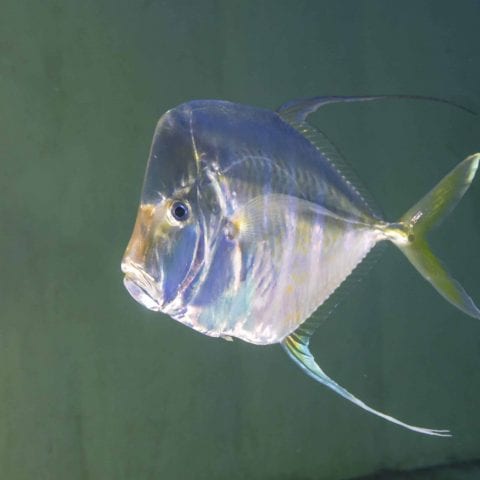
- Status
- Least Concern
- Average Size
- 19 in
- Location
- Tropical Atlantic Ocean
- Threats
- Aquarium trade, habitat loss
- Defining Characteristics
- Protruding lower jaw
The lookdown gets its name from its downward oriented eye, but is also called the moonfish for the Greek goddess of the moon,Selene. The average length of a lookdown is 10 inches. The longest lookdown known was18 inches. They feed on small squids, shrimps, polychaetes (chiefly marine worms usually with paired segmental appendages, separate sexes, and a free-swimming larva) and small fishes. Its range includes the West Atlantic, Nova Scotia to Florida, Coastal Central and South America, Bermuda and Gulf of Mexico. This is a benthopelagic, (living and feeding near the bottom as well as in midwaters or near the surface) and demersal (living near, deposited on, or sinking to the bottom of the sea) species found in shallow coastal waters. This species is found at depths to 175 ft.
Red Drum
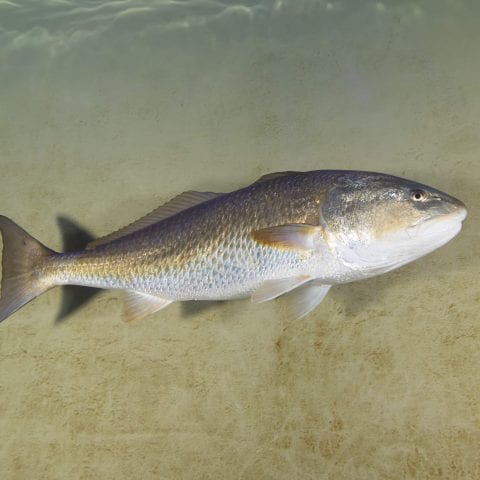
- Status
- Data Deficient
- Average Size
- On average red drum can grow to 40 inches, 40 pounds on the Gulf of Mexico coast; 45 inches, 52 pounds on the Atlantic coast.
- Location
- Gulf of Mexico, Atlantic Ocean
- Threats
- Trawl fishing, habitat loss
- Defining Characteristics
- Copper-red coloring
The red drum uses its senses of sight and touch, and its downturned mouth, to locate forage on the bottom through vacuuming or biting. A 3-year-old red drum typically weighs 6 to 8 lb. The largest red drum on record weighed just over 94 lb and was caught in 1984 on Hatteras Island. They max at 5 ft in length. In the summer and fall, adult red drum feed on crabs, shrimp, and sand dollars; in the spring and winter, adults primarily feed on menhaden, mullet, pinfish, sea robin, lizardfish, spot, Atlantic croaker, and flounder. Red drum can live up to 60 years. Ranges include Southern Atlantic and Gulf of Mexico coasts of the United States, including the coasts of Louisiana, Texas, Alabama, Mississippi, and Florida. Immature red drum prefer grass marsh areas of bays and estuaries when available. Both younger mature red drum (3-6 years of age) and bull red drum prefer rocky outcroppings including jetties and manmade structures, such as oil rigs and bridge posts.
Lined Seahorse
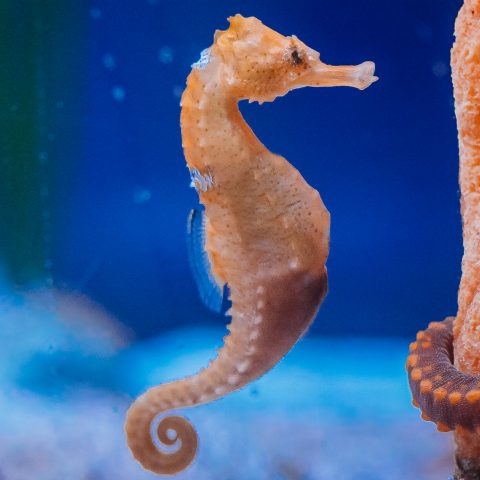
- Status
- Vulnerable and at high risk of extinction
- Average Size
- 2-4 In
- Location
- Western Atlantic Ocean, from Nova Scotia to Uruguay
- Habitat
- Mangroves, seagrasses, sponges, corals, and floating sargassum
- Diet
- Small crustaceans, amphipods, copepods, polychaetes, and gastropods
Sargassum Frogfish
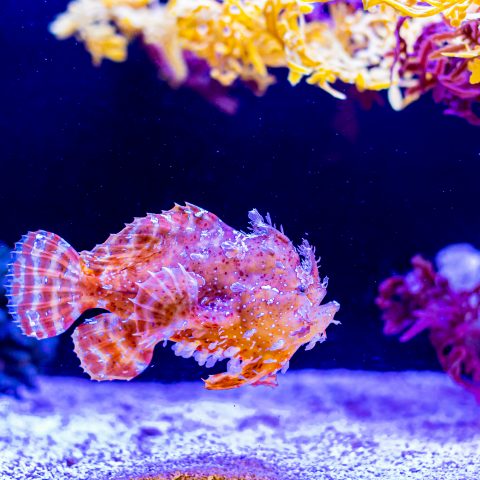
- Average Size
- 7-8 In
- Location
- South Africa, Indian Ocean, Atlantic, Subtropical seas of the world
- Habitat
- Floating sargassum
- Diet
- Shrimp and small fish
Ocellaris Clownfish
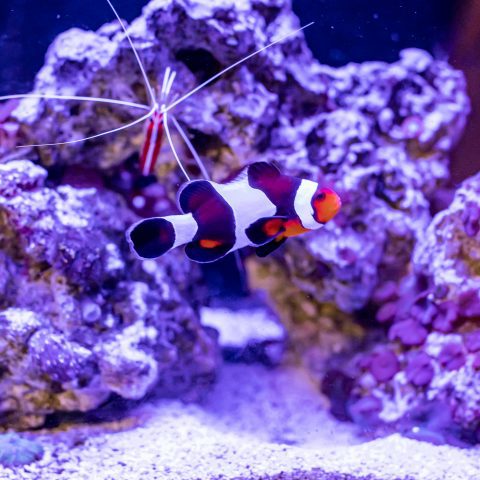
- Status
- Least Concern
- Average Size
- 4 In
- Location
- Indo-West Pacific Ocean, Philippines, Australia, and Southeast Asia
- Habitat
- Outer reef slopes, sheltered lagoons
- Diet
- Polychaete warms, amphipods, copepods, algae
CMA received a call of a clownfish swimming in the shallows at Fred Howard Park beach in Tarpon Springs. CMA retrieved the clownfish. These fish are native to the Pacific Ocean and so it had to have been released by a pet owner into local waters. This is a prime example of how invasive species can be introduced and may lead to ecological imbalances and threaten native species. Releasing non native animals is also illegal.
Yellow Tang
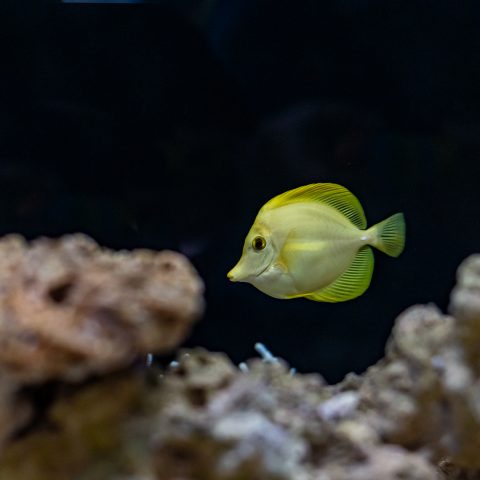
- Status
- Least Concern
- Average Size
- 7.9 In
- Location
- Pacific Ocean, Japan, Hawaii, and Western Atlantic
- Habitat
- Coral-rich tropical waters
- Diet
- Algae, seaweed, and zooplankton
Algae Blenny
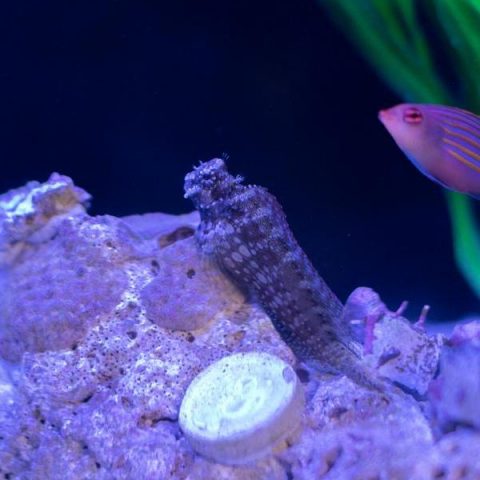
- Average Size
- 4-6 In
- Location
- East Africa, Red Sea, Samoa, Micronesian Islands
- Habitat
- Reefs, Rocks, and Corals
- Diet
- Algae, Tiny Invertebrates, Detritus
Neon Goby
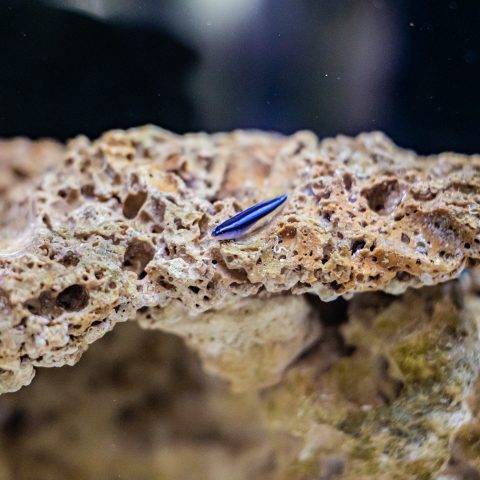
- Average Size
- 2 In
- Location
- Gulf of Mexico, Caribbean Sea, and Western Atlantic Ocean
- Habitat
- Coral reef heads
- Diet
- Parasites
Golden-lined Rabbitfish
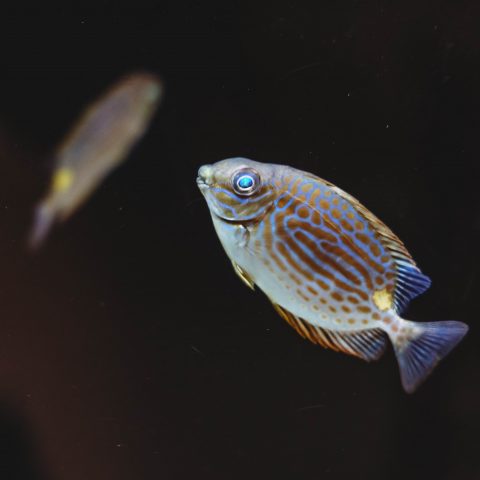
- Average Size
- 17 In
- Location
- Indo-West Pacific Ocean, Gulf of Thailand, Philippines, Vanuatu, northern Australia
- Habitat
- Lagoons
- Diet
- Encrusting algae and leafy algae
Miniatus Grouper
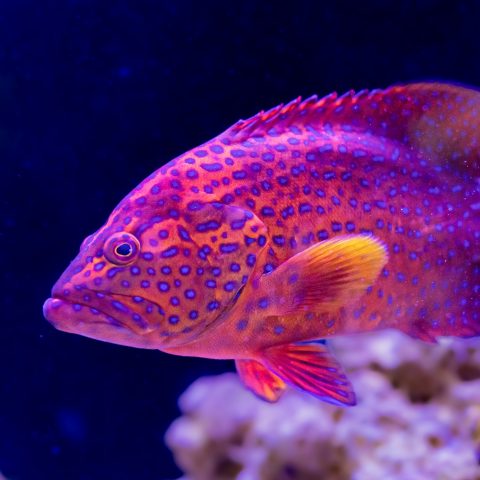
- Average Size
- 18 In
- Location
- Indo-West Pacific Ocean, Red Sea, Durban, South Africa, and Line Islands
- Habitat
- Near caves and holes in lagoon reefs, and also areas under ledges
- Diet
- Small fishes and crustaceans
Tarpon
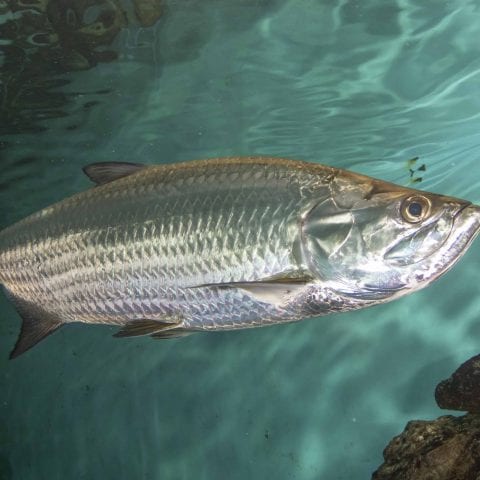
- Status
- Vulnerable
- Average Size
- 4 ft
- Location
- Gulf of Mexico, Atlantic Ocean
- Threats
- Fishing, harvesting, habitat lost
- Defining Characteristics
- Shiny, silvery scales
The “Silver King” is one of the Tampa Bay area’s premiere sportfish for anglers looking for a serious battle. They are known as strong fighters and commonly jump multiple times while being caught. There is no food value for tarpon, so they are typically released back into the waterway. Tarpons grow to about 4 to 8 feet long and weigh 60 to 280 lbs. Their diet consists of insects, fish, crabs, and grass shrimp. Tarpon live 30 to 63 years. They are found throughout the coast of the Gulf of Mexico and throughout the Caribbean. Tarpons are also found along the eastern Atlantic coast from Senegal to South Angola. Although primarily a coastal marine fish, tarpon often swim up rivers to access freshwater marshes.
Coral Beauty Angelfish
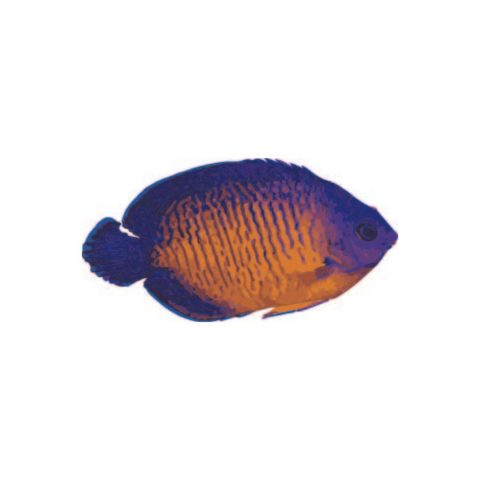
- Average Size
- 4 In
- Location
- Indo-West Pacific Ocean, East Africa, Seychelles, Tahiti, Japan, and Great Barrier Reef
- Habitat
- Coastal lagoon coral heads, outer reef slopes, and outer reef faces
- Diet
- Algae and detritus
Pajama Cardinal
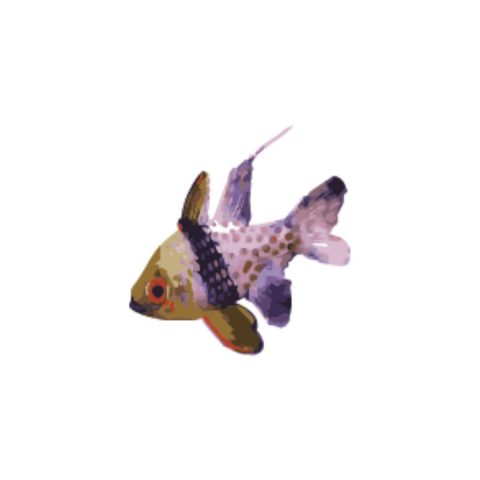
- Average Size
- 3.3 In
- Location
- Western Pacific Ocean, Ryukyu Islands, Java, New Guinea, and Micronesia
- Habitat
- Lagoons, sheltered bays, and reefs
- Diet
- Crustaceans
Sixline Wrasse
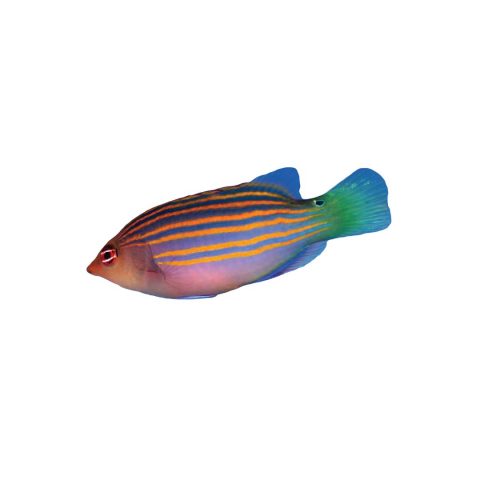
- Status
- Least Concern
- Average Size
- 2-4 In
- Location
- Red Sea, Indian Ocean, Western Pacific Ocean
- Habitat
- Coral reefs, clear coastal water slopes
- Diet
- Small crustaceans
GloFish White Skirt Tetra
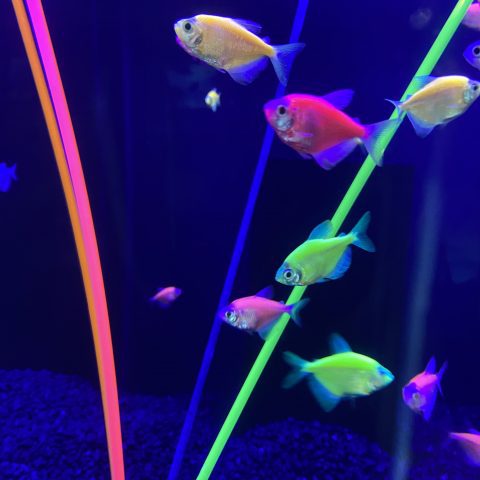
- AVERAGE SIZE
- 1-2 In
- HABITAT
- Tetras are native to the tropical waters of Argentina, Bolivia, and Brazil. However, you won’t find white tetras (or any of their colorful counterparts) in the wild. The white skirt tetra is just an albino variation of the black skirt tetra. The Black Skirt tetra is native to Bolivia, Brazil and north-ern Argentina and inhabits subtropical river basins where the water temperature stays between 20 and 26° C (68 and 79° F). The Black Skirt tetra was earlier regarded as native to Paraguay too, but this turned out to be a case of mistaken identity. The Black Skirt tetra has today been introduced to nearby Colombia as well as too far away Thailand. The Black Skirt tetra is a pelagic species that will spend its time in the middle and upper water layers.
- DIET
- Omnivore, brine, shrimp, flakes, and worms
Atlantic Blue Tang
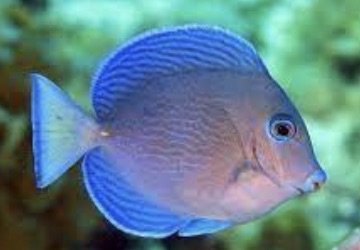
- Size
- 12 In
- Habitat
- Coral reefs and inshore grassy and rocky areas
- Geographical Distribution
- Found in the Atlantic Ocean from New York and Bermuda to the Gulf of Mexico, south to Brazil
- Diet
- Algae
Blue Headed Wrasse
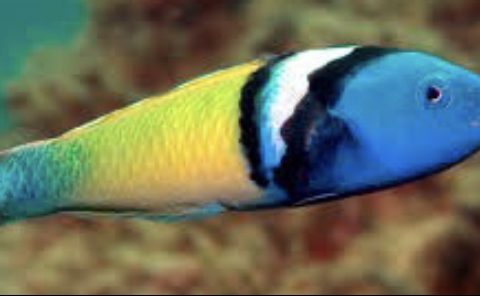
- STATUS
- Least Concern
- THREATS
- Habitat destruction, over-fish and pollution
- SIZE
- 4-5 In
- HABITAT
- Bluehead wrasses thrive in coral reef environments, favoring locations with abundant coral cover and clear waters that provide an ideal setting for their foraging activities.
- GEOGRAPHICAL DISTRIBUTION
- Native to the western Atlantic Ocean, including the Caribbean Sea and the Gulf of Mexico, bluehead wrasses contribute to the biodiversity of these regions.
- DIET
- Their diet primarily consists of small invertebrates, showcasing their role in the intricate food web of coral reefs as they forage for crustaceans and mollusks.
Four-Eyed Butterfly
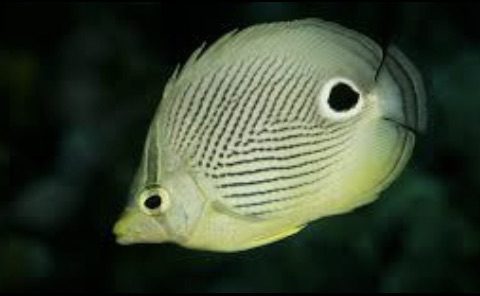
- STATUS
- Least Concern
- THREATS
- The primary dangers in-clude habitat degradation, overfishing, and the impacts of climate change.
- SIZE
- 4-6 In
- HABITAT
- Four-eyed Butterflyfish are commonly found in coral reefs and rocky areas with abundant coral growth. They prefer shallow, clear waters, often dwell-ing near the reef’s edge.
- GEOGRAPHICAL DISTRIBUTION
- This species is native to the Western Atlantic Ocean, ranging from the coast of Florida and the Bahamas to the northern regions of South America, including the Gulf of Mexico and the Caribbean Sea
- DIET
- Primarily consists of coral polyps, small invertebrates, and algae. They use their specialized mouthparts to pick at coral and rocks, extracting small organisms as a source of nourishment.
High Hat Fish
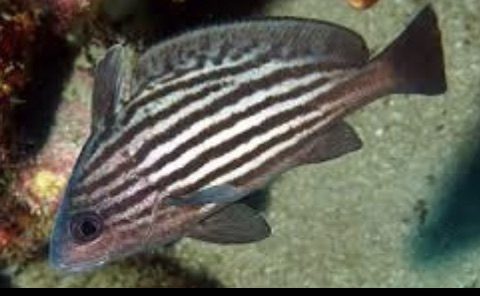
- STATUS
- Least Concern
- THREATS
- Habitat destruction, over-fish and pollution
- SIZE
- 9 In
- HABITAT
- Pareques acuminatus is commonly found in sandy or muddy substrates along coastal areas, in-cluding bays and estuaries. It prefers habitats with ample hiding spots such as seagrass beds and areas with submerged vegetation.
- GEOGRPAHICAL DISTRIBUTION
- The High Hat Fish is native to the Western Atlantic Ocean, ranging from the eastern coast of the United States, throughout the Gulf of Mexico, to the northern coast of South America.
- DIET
- The species is mainly nocturnal, spending the day sheltered and feeding at night on sand, mud, and rubble bottoms close to the reef, feeding on crustaceans, polychaetes, small bony fishes, and zoo-plankton
Royal Gramma
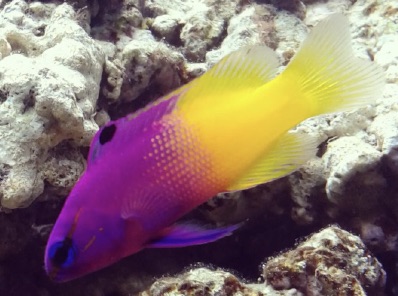
- SIZE
- 2.5-3 In
- PREY
- Zooplankton, phytoplankton, brine, shrimp
- PREDATORS
- Larger fish, crabs
Crustaceans
Cleaner Shrimp
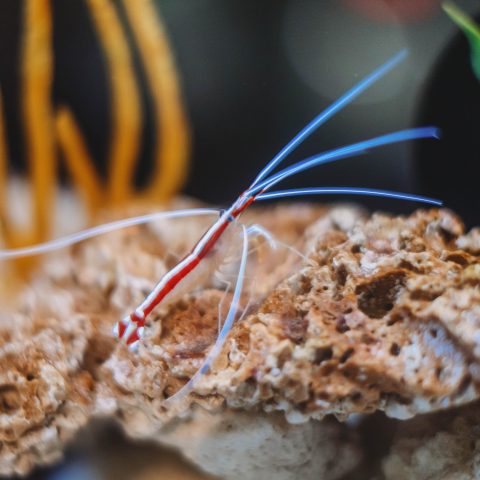
- AVERAGE SIZE
- 2-2.4 In
- LOCATION
- Indo-Pacific Ocean and Red Sea
- HABITAT
- Coral reef caves or rock ledges
- DIET
- Parasites and dead tissue from fish
Spiny Lobster
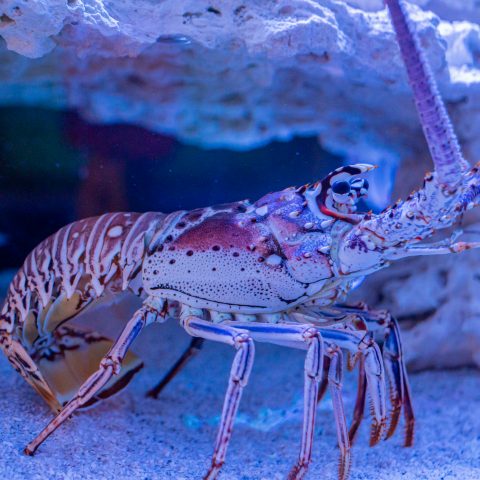
- SIZE
- 15 inches
- WEIGHT
- Up to 15 pounds
- GEOGRAPHICAL DISTRIBUTION
- Spiny lobsters live in tropical oceans worldwide. However, they are most commonly found in the Caribbean and Mediterranean, in coastal waters off Southeast Asia and Australia, and off the coast of South Africa.
- HABITAT
- They live in protected crevices and caverns of coral reefs, sponge flats, and other hard-bottomed areas
- DIET
- : Variety including snails, crab, clam, & urchins
- THREATS
- Unstainable Fishing practices including overfishing Predators include groupers, snapper, skates, turtles, & octopi
Giant Hermit Crab
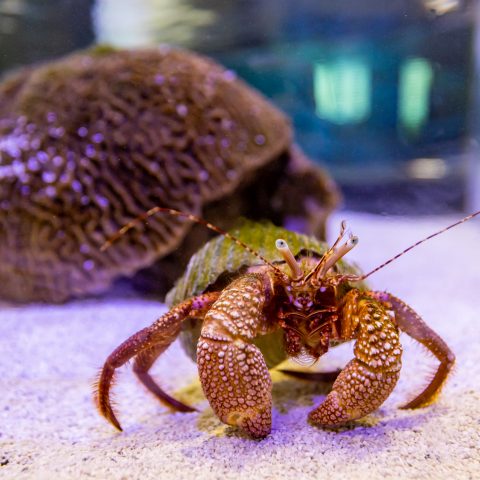
- AVERAGE SIZE
- 12 In
- LOCATION
- Atlantic Ocean, Brazil, Caribbean Sea, and Gulf of Mexico
- HABITAT
- Muddy, sandy, and shelly bottoms, turtle grass beds and mangroves
- DIET
- Macroalgae and other invertebrates
Cleaner Shrimp
Maine Lobsters
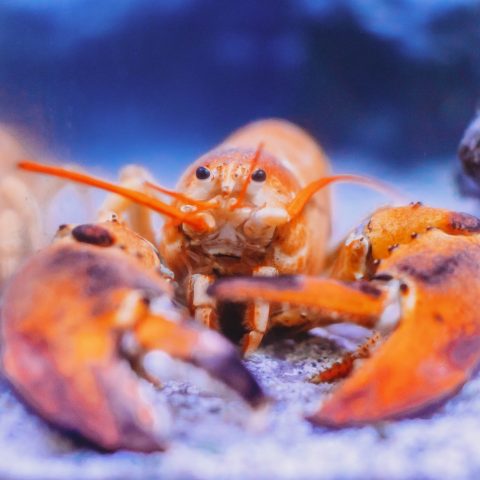
- AVERAGE SIZE
- Up to 3 ft. 3 in.
- LOCATION
- Canada, North Carolina, and Maine
- HABITAT
- Cold and rocky coastal waters
- DIET
- Crabs, mollusks, worms, urchins, sea stars, fish, & maroalgae
- DEFINING CHARACTERISTICS
- Lobsters with various pigmented colorations, such as orange, are considered rare.
Blue Crab

- STATUS
- Not threatened or endangered
- AVERAGE SIZE
- 7 In
- LOCATION
- Western Atlantic Ocean, Nova Scotia, Maine, northern Massachusetts, Argentina, Bermuda, and the Antilles
- HABITAT
- Underwater grasses, and oyster reefs, and range from shallow, brackish waters to deeper saltier waters
- DIET
- Clams, oysters, mussels, smaller crustaceans, dead fish, plants, animal detritus
Other Aquatic & Coastal Species
Common Octopus
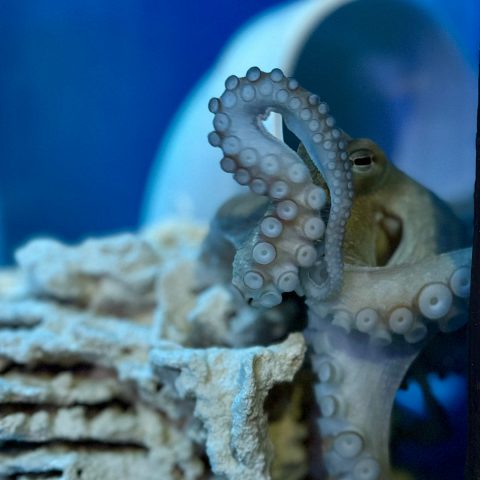
- Average Size
- Up to 10 inches (armspan up to 118 inches)
- Habitat
- Rocky areas and Coral reefs
- Range
- Atlantic Ocean, Mediterranean Sea, and Western Europe
- Diet
- Small fish, crabs, other shellfish
These creatures utilize discarded trash for shelter, yet this debris can also harm their health due to contaminants. Research and education are crucial for understanding and conserving this species, as their population trends are largely unknown, and their survival is impacted by factors such as bycatch, entanglement, and habitat degradation.
Support research and education efforts to understand and conserve octopus populations. With their survival threatened by bycatch, entanglement, and habitat degradation, every effort counts. Start by making a simple change in your daily habits–pick up your trash and dispose of it properly to prevent pollution in our waterways, thus safeguarding the habitat of the octopus and other marine life.
Mudskippers
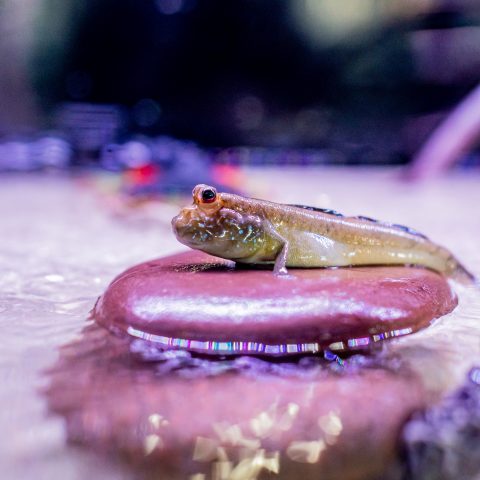
- Average Size
- 2.75 to 9.75 In
- Location
- Tropical Atlantic coasts of the African Indian Ocean, Western Pacific Ocean and Guam
- Habitat
- Their environments are fresh, marine and brackish waters. Need land and water areas to thrive.
- Diet
- Crickets, worms, flies, mealworms, beetles, fish, crustaceans, and other arthropods
They are able to absorb oxygen through their skin and this allows them to sit on top of rocks outside of the water.
Perdido Key Beach Mice
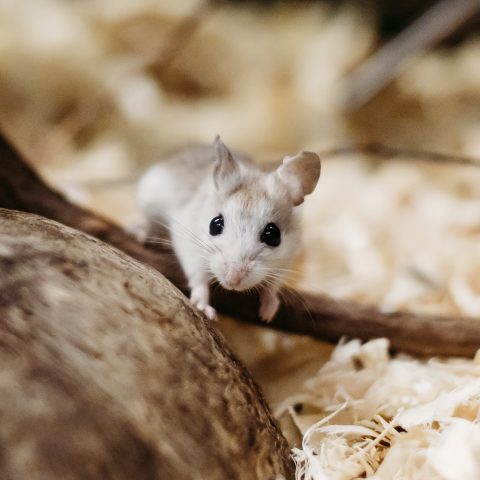
- Status
- Endangered species
- Average Size
- 3 In
- Location
- Perdido Key, Florida & Baldwin County, Alabama, Dunes
- Threats
- Habitat loss due to hurricanes, construction and foot – traffic damaging vegetation on dunes
- Habitat
- Coastal Dunes
The mice carry seeds to a deep seed cache for storage. Some of the uneaten seeds take root in the sand, which sustains the dunes’ structure. These dunes protect from storm surges and high waves, preventing or reducing coastal flooding.
African Clawed Frog
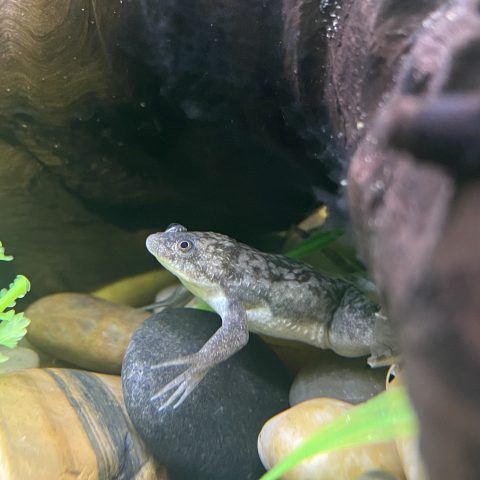
- Status
- Least Concern
- Average Size
- Males: 2-2.5 In; Females: 4-4.5 In
- Location
- African Rift Valley south of the Sahara Desert in east and Southern Africa
- Habitat
- Warm, stagnate pools and quiet streams
- Diet
- As tadpoles exclusively filter feeders, adults become scavengers, eating living, dead or dying arthropods and other organic waste. Insect larvae, water insects, crustaceans, small fish, tadpoles worms and snails.
Corals
Discosoma Mushroom Corals
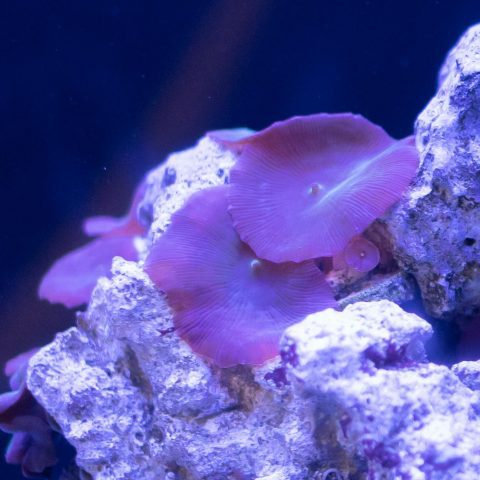
- Average Size
- 2 to 3 In
- Location
- Indo-West Pacific Ocean, Red Sea, East Africa, Indonesia
- Habitat
- Nutrient rich tidepools, shallow lagoons, and various coastal areas
- Diet
- Marine algae (zooxanthellae), nanoplankton
Zoanthids
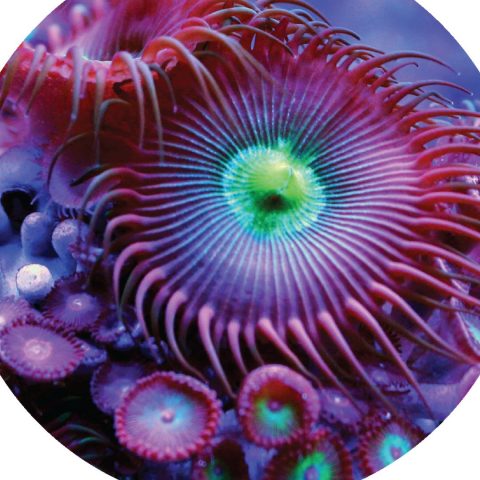
- Average Size
- 1.5 In
- Location
- Most marine environments, common in tropical and sub-tropical waters
- Habitat
- Coral reefs flats
- Diet
- Zoas are photosynthetic coral and get nutrition from their symbiotic zooxanthellae
